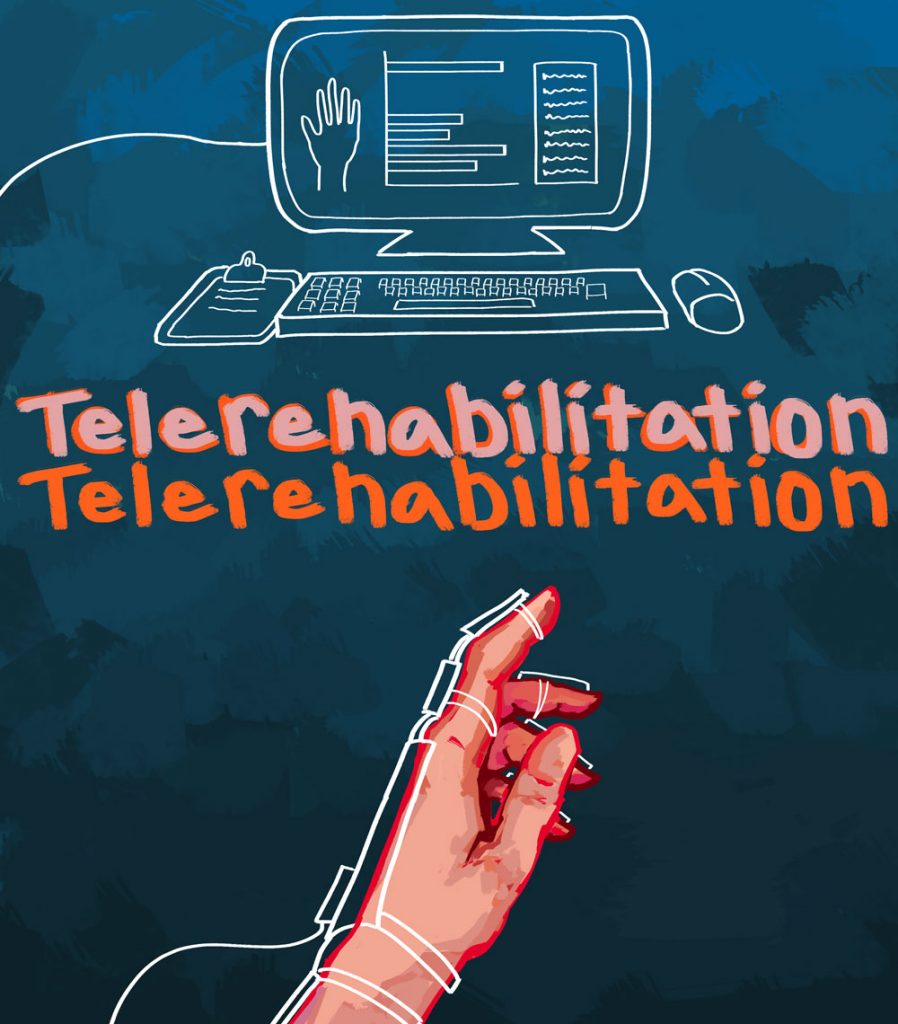
Written by Tong Yu
Illustrated by Nancy Ung
Imagine that you are in your condo located in downtown Toronto and you are about to begin your physiotherapy session for your tennis elbow. You put on this exoskeleton onto your right arm and then you sign in your eHealth account. Meanwhile, your physiotherapist who is sitting in his clinic in San Francisco puts on his magical gloves and wait for you to get online. Now, you guys are both ready to get started. After conducting a brief follow-up with you through voice chat, he starts massaging your forearm. Then, he guides you through a several rehabilitation exercises. At the end, he books you in for next appointment next Tuesday 8 PM EDT…
I know this sounds quite futuristic, but this is in fact something coming along its way — telerehabilitation. Telerehabilitation is the delivery of rehabilitation service over internet through several forms of technology. It allows therapists to deliver rehabilitation treatments to patient who cannot physically be at clinic. This innovative service greatly reduced transportation cost and time for both healthcare providers and patients. Also, it grants patients more autonomy over the timing and intensity. There are three contemporary technologies involved in telerehabilitation: image-based, sensor-based and virtual environment-based. They enable physiotherapists to conduct assessments, real time remotely feel and touch patients, prescribe exercises and just to name a few. Also, patients will be able to receive real time visual and verbal cues, providing feedbacks to their therapists. In fact, there are still a great number of challenges lying ahead of us, such as technical challenge, economic challenge and safety issues regarding to home-based rehabilitation. But have faith my friend, soon you can get your arm treated while lying on your couch.